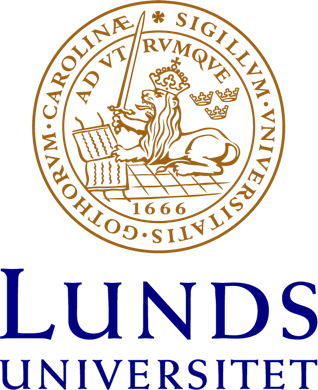Sökresultat
Filtrera
Filtyp
Din sökning på "*" gav 535969 sökträffar
Röda mässan och rättegångsgudstjänsten : om juristers offentliga möten med religionen
ATLAS High-Level Trigger, Data Acquisition and Controls Technical Design Report
This Technical Design Report (TDR) for the High-level Trigger (HLT), Data Acquisition (DAQ) and Controls of the ATLAS experiment builds on the earlier documents published on these systems: Trigger Performance Status Report, DAQ, EF, LVL2 and DCS Technical Progress Report, and High-Level Triggers, DAQ and DCS Technical Proposal. Much background and preparatory work relevant to this TDR is reference
Styrning och kalkylering av anläggningsinvesteringar
Structural Optimization of Multibody Systems
Flexible multibody dynamics (FMD) has found many applications in control, analysis and design of mechanical systems. FMD together with the theory of structural optimization can be used for designing multibody systems with bodies which are lighter, but stronger. Topology optimization of static structures is an active research topic in structural mechanics. However, the extension to the dynamic case
Gene Regulatory Networks: Dynamics and Stability
Popular Abstract in Swedish Alla levande varelser består av celler. En cell innehåller ett stort antal kemiska föreningar, och särskilt viktiga är proteiner och DNA. Proteiner utför många livsnödvändiga kemiska reaktioner, och DNA består av gener som beskriver hur dessa proteiner konstrueras. En gen kan vara uttryckt, så att det protein den beskriver - kodar för - tillverkas, men den kan också varLife as we know it is based on cells that use proteins and RNA to carry out metabolism, self-replication, and other essential tasks. The genes that code for these molecules are encoded in DNA, and through the processes of transcription and translation the cell expresses its genes. Some proteins are transcription factors that regulate the transcription rate of genes, so genes interact and form a ge
Mannen i ledet. Takt och otakt i värnpliktens skugga
Popular Abstract in Swedish Från början användes uttrycket "mannen i ledet" bara om meniga soldater, men det är också ett bildligt uttryck med innebörden gemene man, gräsrot, medlem på fältet/gräsrotsnivå/verkstadsgolvet. Den här avhandlingen handlar om unga män som under mitten av 1990-talet gjorde lumpen på ett pjäskompani vid Wendes artilleriregemente i skånska Hässleholm. ”Pjäs” betyder kanoneThis dissertation deals with young men who in the mid 1990s made their military service at a cannon company at Wende’s artillery regiment in the scanian town Hässleholm. ”Cannon” refers not only to cannons, but also to haubitses, grenade-throwers and other heavy arms. The focus, however, is on cultural and social aspects of everyday military service. What does actually happen in the encounter betw
No title
Abstract not available
Barriers for Biomedical Engineering Commercialisation
A Combinatorial and Probabilistic Analysis of Voting Blocs With Application to Multiparty Systems
Abstract is not available
The Influence of Polyelectrolytes on the Stability of Colloids
Popular Abstract in Swedish Den här avhandlingen handlar om interaktion mellan två ytor (t.ex. fibrer, lerpartiklar eller proteiner) i en vattenlösning med motjoner, salt och/eller polyelektrolyter. Polyelektrolyter är laddade polymerer. Avhandlingen är fokuserad på elektrostatisk växelverkan och interaktionerna har undersöks med hjälp av Monte Carlo-simuleringar. De kvalitativa resultaten har oftThe interaction between two colloids with grafted polyelectrolytes in aqueous solution is studied within the primitive model by Monte Carlo simulations. For neutral colloids with grafted polyelectrolytes and in absence of salt the interaction is strongly repulsive in absence of salt. The interaction depends on the extension of the polyelectrolytes from the surfaces and the interaction is derived a
Meanings of words : theory and application
This chapter presents a Cognitive Semantics framework for the analysis of words and meaning-making in language, Lexical Meaning as Ontologies and Construals, and the basic socio-sensory-cognitive assumptions on which this framework rests. It demonstrates the repercussions of the basic assumptions of the approach to word meaning, highlighting its usefulness for describing and explaining mean-ing-ma
Cerebral pares
Supply Chain Risk Management
“ Supply Chain Risk Management”. Book chapter in Brindley, Clare (ed): “Supply chain risk: A reader”. Ashgate Publishing Limited. UK. 22 pages. August 2004. Reviewed by Dr Marc Day, University of Keele, Staffordshire, UK and Dr Anthony Ross, Associate director of Rand Corp.'s Center for domestic and International Health Security, Santa Monica, California, US.
The Creative Personality in a Gender Perspective
Two empirical investigations of the creative personality, including a gender perspective, are described. In one of them the participants were school children and in the other the group consisted mainly of university students. Creativity is here conceived within a particular theoretical frame which is particularly focussing on individual differences in the perceptual process. Gender was studied fro
New reduced state space BCJR algorithms for the ISI channel
A critical component in detection under intersymbol interference (ISI) and in turbo equalization is the BCJR algorithm. We study two approaches to reducing its computation. First, the state space is reduced by optimizing the receiver's phase-maximizing all pass filter. Then the state space used by the BCJR calculation is reduced by breaking the state into an offset and a main state. These procedur
Lagen om marknadsmissbruk och lagen om anmälningsskyldighet
New Theory of Elasto-Plastic Stability with a Discussion of the Contradictions, Inherent in Present Inelastic Column Theories
[abstract missing]
Search for beyond Standard Model physics with same-sign dileptons
Popular Abstract in Swedish Frågorna som partikelfysiker ställer är samma frågorna som folk har ställt under hela mänsklighetens tid på jorden, nämligen: Var kommer vi från? Vad är det som bygger upp det universum som vi ser? Hur håller allting ihop? Fysiker, historiens stora tänkare och hobbyfilosofen i pubben har alla funderat över de här frågorna (vissa mer än andra). Partikelfysiker försöker hAn introduction into the theory and experimental background of particle physics and the ATLAS detector is given. The transition radiation tracker (TRT) which is vital to the particle tracking and identification is then described giving particular creedence to the calibration. The automation of this calibration is explained. The second half of this thesis and the central part dwells on the analyses
